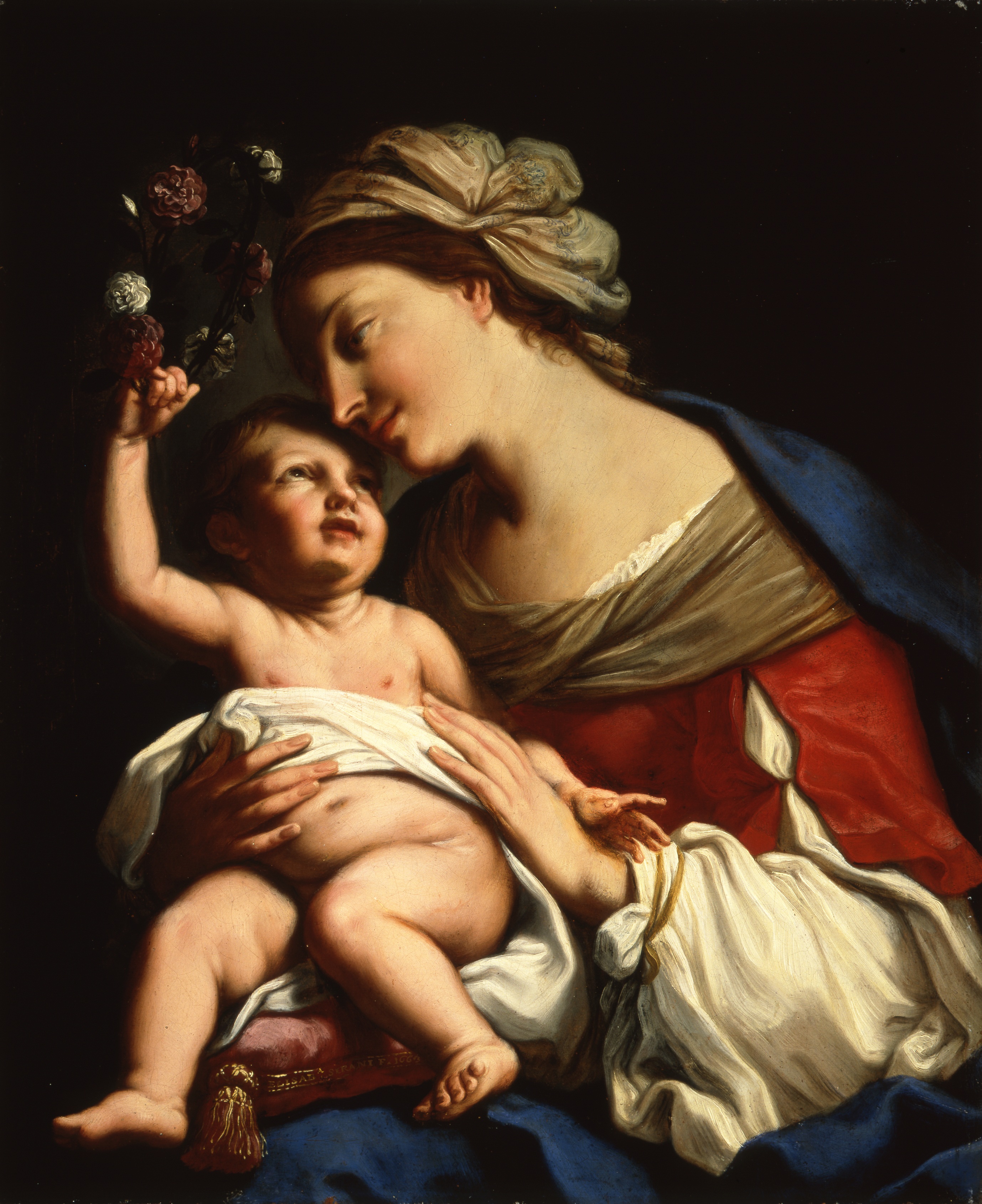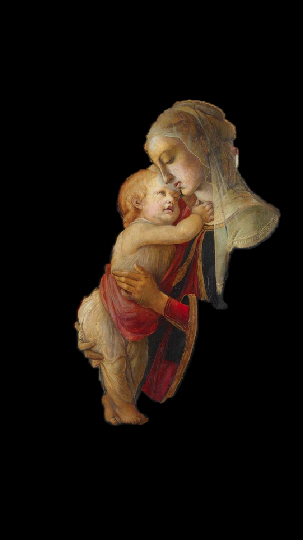Woman of Faith: Agony in the Garden
Fr. J. Patrick Gaffney, SMM
Breathing the calm atmosphere flowing from the background music of Hail Mary’s, we enter into the first Sorrowful mystery of the Rosary, the Agony in the Garden.
Woman of Faith
S ince the Rosary is a gospel prayer; it would be well to prayerfully read one or more of the scriptural accounts of the Agony before the Rosary meditation itself.
It is found, with some variations, in Mark and the two gospels which depend upon him, Matthew and Luke: Mk 14:32-42; Lk 22:39-46; Mt 26:36-d6. John’s gospel omits this episode entirely.
The Agony in the Garden is the beginning of the Passion of Our Lord Jesus Christ. The suffering of Our Lord in this first sorrowful mystery is beyond the power of the human mind to grasp.
The Beginning of the Passion
Often Jesus had gone to Gethsemani, located on the Mount of Olives. There He and His disciples would rest, or Jesus would spend the night in prayer. Judas, one of the Twelve, knew the place well. After the Last Supper, Jesus, knowing that the authorities were hounding Him, goes to this familiar grove of olive trees on the hill overlooking Jerusalem. For hours He prayed to His Father while the disciples, not fully understanding that the “hour of darkness” had arrived, fell soundly asleep.
We can well imagine that as Jesus prayed, He looked across the narrow Kidron valley into the Temple area. And from the Roman fortress – the Antonia – situated at the north-west corner of the Temple esplanade, lanterns of soldiers began to file out into the darkness. Once outside the city walls, the column headed for the olive grove. Jesus knew that the police were now coming to arrest Him.
Falling prostrate on the ground, He begged the Father. “Let this cup pass from me”! Nowhere in the gospels is the humanity of the Lord so evident as here. Nowhere in the scriptural portraits does Jesus express such agonizing revulsion at His destiny of suffering, such deep anguish and distress. Trembling with fear, drenched with the sweat of agony, He watched the torches coming up the hill towards Him. Judas – one of His closest followers – at the head of the contingent.
I Was Sent For This Purpose
Run away? Would it not have been possible in the darkness of the night? But from the depths or His being, He cries out. “ABBA”! The word of a child for its own father. A babbling sound of tender love, of firm obedience. “ABBA! Not My will but Yours be done”! To run away would be to betray His very self; to betray the mission given Him by the Father to proclaim the Reign of God. At the beginning of His ministry, He boldly announced; “I must proclaim the Kingdom of God . . . for I was sent for this purpose”. (Lk 4:43). His fidelity would be expressed in obedience “unto death, even death upon a cross”. (Phil 2:8).
The intensity of Jesus’ Agony in the Garden is only understood in the context of His betrayal.
Suffering supported by a loving, sharing community becomes mysteriously endurable. If loneliness, betrayal, are joined to suffering, it becomes a taste of hell. And this Jesus suffered. Luke alone adds the presence of a comforting angel to the Agony account (although the oldest Lucan manuscript omits it).
The Pain of Betrayal
The traitor, incredibly, is one of the twelve, the chosen few! And the betrayal is accomplished by the sign of love, a kiss; “is it with a kiss, Judas, that you hand over the Son of Man”? (Lk 22:48). Both Matthew and Luke speak not only of the sleep of the disciples during Jesus’ agony but add that at the arrest, “they all forsook Him and fled”. (Mk 14:50; Mt 26:56). Mark heightens this desertion of Jesus with the stop of the young man who followed Jesus at the arrest but when seized by the police, runs away naked (Mk 14:51-52). In the Love of the Eternal Wisdom, Saint Louis de Montfort summarizes this pain of betrayal. “He suffered in His disciples, one of whom bartered Him for money and betrayed Him; another, their leader, denied Him, and the rest abandoned Him”. (# 159).
Alone, Jesus faces trial and condemnation. Peter follows but only at a safe distance (Lk 22:54), apparently afraid of being arrested along with Jesus. In utter loneliness Jesus, the Lord of glory, is led away to His trial. The Eternal and Incarnate Wisdom, Jesus, the Human Face of God, Infinite Love Incarnate, is seized like a common criminal to be judged by His creatures. For our sins and for our salvation, He is “led like a sheep to the slaughter”. (Is 53:7).
Where Is Mary?
And where is Mary during this agony and arrest of her Son? Recall that from all eternity, God Who is Love freely wills to externalize His Word as the Son of Mary. It is, then, utterly impossible, according to the Father’s plan of salvation, to separate the Mother from the Son. Jesus is forever the fruit of her faith. Our Lady is, therefore, “the inseparable companion of His life, of His death, …” (TD #74). Who can ever dare explain the connatural relationship of knowledge and love which unites every mother and child? Who can, then, understand the union of Mary with Jesus, especially when she sees that He is being hunted down, that His arrest is near? She was not with him physically in the Agony in the Garden. Mary was present far more intimately. She was with Him as Mother.
“Not where I breathe, but where I love, I live” says the poet, Robert Southwell. The love which unites Mother and Son is beyond comprehension and especially so as the Passion begins.
The news of Jesus’ impending arrest by the authorities has surely reached Mary. She knows the tortures inflicted on “criminals,” she is more united to her Son than anyone else. Who can begin to grasp the sufferings she endures as her Son enters into the final drama of His life, His ignominious death upon the cross?
It is within the suffering heart of Mary that we meditate on the Agony in the Garden. It is with her that we contemplate Our Blessed Lord “who in the days of His flesh offered prayers and supplications with loud cries and tears, to Him who was able to save Him from death, and He was heard for His godly piety”. (Heb 5:7).

Madonna and Child: painter Elisabetta Sirani: 1663
Elisabetta took over the studio of her father Giovanni Sirani in 1654-1655. This painting resides in the National Museum of Woman Arts in Washington, DC.

Madonna and Child: Italian Painter: Sandro Botticelli: 1468
This is a portion of the painting. It includes the removal of the background, focusing on Mary and the Child Jesus. This painting appears in the original Queen of All Hearts magazine article on the inside pages. The Queen duplicates this image using the live painting, which resides in the Louvre, Paris, France.
It is within the suffering heart of Mary that we meditate on the Agony in the Garden. It is with her that we contemplate Our Blessed Lord “who in the days of His flesh offered prayers and supplications with loud cries and tears, to Him who was able to save Him from death, and He was heard for His godly piety”.
Return to The Queen: Articles


